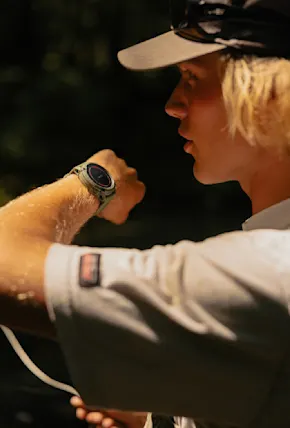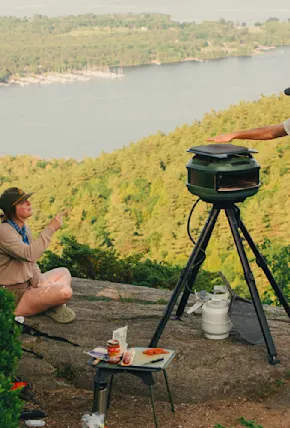Patagonia is one of the most well-known outdoor gear companies on the planet. Even folks who have never laced up a pair of hiking boots or climbed anything other than stairs probably know about its fleece pullovers, and those within the outdoor community know it makes high-quality clothing and baselayers for backpacking trips, alpine climbing, and nearly every other outdoor pursuit, including wetsuits, packs, duffels, fly fishing waders, and even ultralight gear. But not many people know that Patagonia also makes sleeping bags.
To be fair, the Ventura-based company only recently started selling down-stuffed sleeping bags in 2017 (though it did have a synthetic hybrid bag before that). But that fact is somewhat surprising given that founder Yvon Chouinard made himself a lightweight sleeping bag nearly 50 years ago, and that the company apparently has been making one-off, minimalist bags for themselves and certain adventurers for who knows how long.
When Patagonia finally did let the rest of us in on its sleeping bag secrets, the company used Chouinard's original design as inspiration, and when it quietly updated the sleeping bag line in 2022, it left all his core design features in place. Testing the newest version of the 30-degree Fitz Roy Sleeping Bag over a warm summer and chilly fall of camping and canoe trips in the Northeast, I could easily see why.
The two main ways in which Patagonia's three-season sleeping bag differs from almost every other one are obvious from even a glance—it has a front-facing zipper and its baffles are vertical instead of horizontal or quilted. A third is easy to see from a side view: the footbox has a roomy 3D shape that's more closely aligned with the sarcophagi mummy-style sleeping bags get their name from.
Chouinard's reasoning for bucking the nearly universal side placement of the zipper was that a front-facing opening lets you stay cozy while belaying or cooking and stops the bag from getting twisted up when you rotate inside of it. A potential detrimental side effect might be that placed such, the zipper could give cold air easy access to a sleeper's core, but Patagonia's designers have easily eliminated that potential pitfall with a big draft tube (that's sleeping bag speak for a interior baffle that sits just behind that zipper when it's closed to keep air out, like a jacket's storm flap).

The footbox has a roomy, contoured shape.
Otherwise, we've found the center zipper holds true to its intended function. And while some other, more casual sleeping bags have arm holes, the Fitz Roy gives you use of your hands in a more streamlined way with three zipper pulls instead of the usual two that let you open up and move around an access point while staying zipped up to your chin. The down jacket comparison extends to how the bag feels too—on warm nights, opening it up is an excellent way to bail some heat—and an interior chest pocket where I stashed my headlamp contributes to the effect. As a bonus, the design is comfier too (if you're a side sleeper who has rolled onto the zipper side of the bag in the middle of the night, you know why).
There's not much to say about the vertical baffle design—it's a nice visual differentiator from other sleeping bags—but the "sculpted" footbox is a genuinely nice feature that does a lot to tamp down claustrophobic feelings that are often associated with mummy-style sleeping bags. Whether it's due to the baffles or some other element of the design, one critique to point out is that I did notice more insulation migration than I have in other sleeping bags, which created cold spots, but it always tended to even itself out eventually. And in keeping with other mummy sleeping bags, there's also a roomy hood that you can cinch tight with a drawcord.

Generally speaking, Patagonia's Fitz Roy sleeping bag treads the path between comfort and minimalism better than most sleeping bags out there. It deftly conforms to the word I like most of my camping gear to align with: versatility. It really does feel roomy and it looks big too, but the 30-degree version—the warmest bag works on 20-degree backcountry nights and there's also a synthetic liner if you want an ultralight sleeping bag—packs down nicely to the size of an overinflated football and weighs 29 ounces; not the lightest, but pretty decent for a three-season bag. That's thanks to 800-fill-power responsibly sourced and traceable goose down and a lightweight 20-denier nylon ripstop shell.
As for the recent updates, they're mostly invisible, consisting of updated materials including a high-end, water-resistant, 100% recycled shell that's solution dyed to reduce waste and has a DWR finish that's free of harmful PFCs. And while we're on the subject of small details, I'll go ahead and mention that one of my favorite if slightly inconsequential features of the Fitz Roy is that the big bag it lives in when not in a stuff sack has its temperature rating and weight labeled on it clearly in huge font. But maybe that only matters to weirdos like me who own more sleeping bags than he can remember the specs for.
Key Specs for the Patagonia Fitz Roy 30°, size regular
Weight: 29 ounces / 822 grams
Fill: 800-fill-power Advanced Global Traceable Down
Shell Fabric: 1.1-ounce 20-denier 100% recycled nylon ripstop
Waterproofing: PFC-free DWR (durable water repellent) finish
Price: $429
Can't get enough down? Check out our favorite packable puffy jackets.








